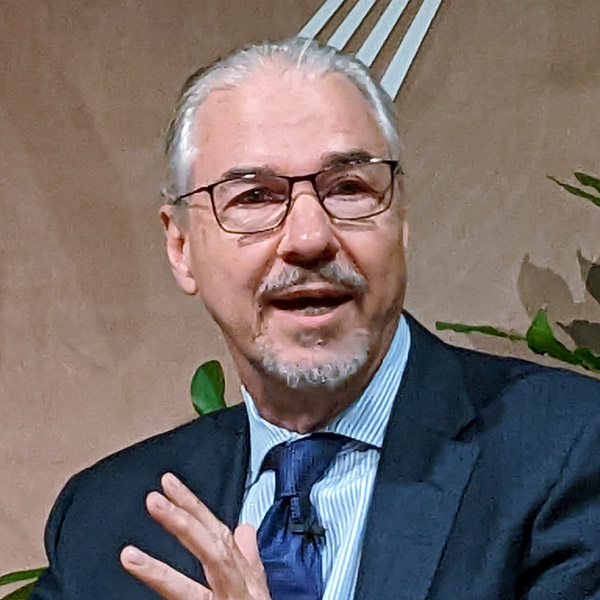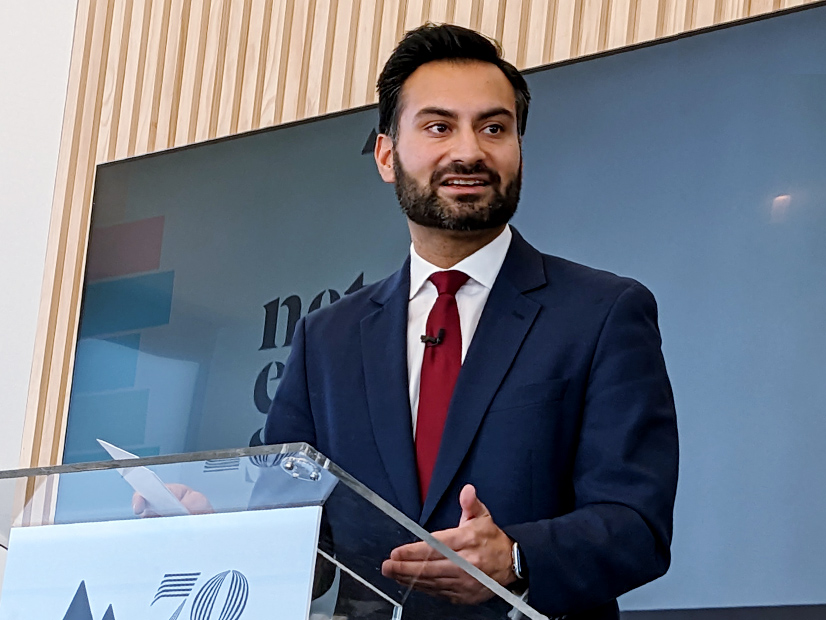WASHINGTON, D.C. — Resources for the Future (RFF) CEO Richard Newell opened his organization’s Net Zero Economy Summit on Thursday by zeroing in on why international goals to limit global warming and climate change have been so hard to translate into action.
“No single nation directly controls atmospheric concentrations or, indeed, the Earth’s temperature. These are byproducts of something else — emissions,” Newell told the audience of about 300. “This is why targeting emissions such as carbon dioxide and methane is so important, because emissions are something we can control and drive down.
“Net zero brings the challenge of climate change down to the level of a balance sheet: emissions in, removals out,” he said. “The same economic forces that contributed to a problem could be harnessed to fix it.”
Newell’s comments provided a focus for the daylong summit, which dug into the complex nexus of economics and politics surrounding net-zero initiatives in the U.S. and worldwide, the progress being made and the systemic inertia that continues to slow the transition.
 Richard Newell, RFF | © RTO Insider LLC
Richard Newell, RFF | © RTO Insider LLCOn the progress side, Newell said, setting net-zero goals, as 139 countries have done, “focuses everyone’s attention on an outcome that can be directly controlled, something that’s scientifically consistent with stabilizing the environment and something that’s technology-inclusive, open to innovation and ready to harness the power of incentives.”
“Net zero is also scalable at multiple levels for a wide range of decision makers” — from national to state to individual cities and businesses, he said.
But, even with the billions in new funding to advance the U.S. energy transition in the Infrastructure Investment and Jobs Act and the Inflation Reduction Act, the gap between aspiration and action still remains, said Ali Zaidi, White House national climate advisor.
“Code red is no longer a line in an IPCC report,” Zaidi said, referring to the most recent report from the UN International Panel on Climate Change, which predicted potentially catastrophic impacts from climate change without “deep reductions” in greenhouse gas emissions in the coming decades.
“The big, defining question of this moment is not whether we acknowledge that this is the decisive decade; science has acknowledged that for us,” Zaidi said in his summit keynote. “The question is, are we going to put the steel in the ground? Are we going to make the decisions?
“We have gotten very used to analyzing and aspiring and failing to take action,” Zaidi said. “If we fail to do that, no matter how beautiful our model looks in 2040 or in 2050, that’s not going to solve the problem, and we will have failed to meet the moment.”
“We have gotten really, really good at stopping things from happening,” agreed Matt Rogers, former CEO of the Mission Possible Partnership, an alliance of organizations working on decarbonizing heavy industry, such as steel, cement and chemicals. “Now we need a whole new muscle that says, ‘How do we make things happen? How do we build projects … at scale?’ That is an essential element at the federal level, at the state level, at the local level.”
The steel industry, for example, has a major opportunity for decarbonization, Rogers said, during a session on industrial decarbonization. Coal-fired steel blast furnaces need to be refurbished or rebuilt every 15 years “because you’re operating at such a heat level, the bricks get brittle,” he said.
“Between now and 2035, every blast furnace in the world has to go through turnaround,” which could allow all those plants to convert from coal to some form of clean hydrogen, Rogers said.
“That, all of a sudden, is a very different economic model … [but] it doesn’t work if we spend another decade on permitting,” he said. “We need to be able to execute quickly. It’s about speed and scale; those are the key markers.”
‘Block Decarbonization’
A failure to take necessary actions to reduce GHG emissions now could mean a 3-10% drop in U.S. gross domestic product by the end of the century — a potential revenue loss of up to $2 trillion per year — Zaidi said, citing figures from the Office of Management and Budget.
Both he and Newell said hitting net-zero targets — while ensuring an effective, efficient and equitable transition — will require a mix of economic and policy drivers.
For Newell, the three core components are “market incentives, technology innovation and international collaboration, with each of these forces guided by well-designed policy.”
“We need innovation in the market policy and financial structures that must underpin a net-zero economy, and we need these structures to be more equitable in delivering the benefits and distributing the costs of actions taken,” he said. “In short, we need the economy to work for the climate.”
Looking back over RFF’s 70-year history, Newell cited the organization’s early role in the development of the cap-and-trade system, established in 1990, that helped the U.S. reduce the sulfur dioxide emissions that caused acid rain.
 Matt Rogers | © RTO Insider LLC
Matt Rogers | © RTO Insider LLCPutting a price on that pollution meant “we could improve on traditional approaches to regulation by creating incentives to find the most effective and efficient ways to drive that pollution down,” he said.
While recognizing that any kind of national carbon cap-and-trade market is not, at least at present, politically viable, RFF continues to support the idea “because it has so many benefits,” said Alan Krupnick, the organization’s industry and fuels program director. “It levels the playing [field] by having every emitter in the economy subject to a single price.”
Building on President Biden’s climate agenda, Zaidi’s three drivers for net zero are irresistible economics, irreversible progress and visible impact, backed up with a list of administration actions. Examples include the domestic content provisions of the IRA’s solar investment tax credits, U.S. automakers’ ongoing retooling as they ramp up production of electric vehicles, and the impact on community and child health from the rollout of electric school buses funded by the IIJA.
The challenges ahead are, first, avoiding delay, and “taking federal policy and making sure the system metabolizes it as quickly as possible to figure out how to use it,” he said. “For folks in the private sector, the time to make decisions is now. Boards can’t commission study committees; they’ve got to greenlight capital projects. …
“When we delay, costs go up, the risk on implementation goes up, and the people who hurt the most are the poorest and least able to adapt,” Zaidi said.
Rogers said the IIJA’s funding for hydrogen hubs could serve as a model for the mix of policy, economics and accounting for regional differences, which will be needed to get projects done and emissions reduced.
“The right mix of projects in Los Angeles or San Francisco is different, and the way you go about doing it is different in LA or San Francisco than it is in Houston,” he said. “The incentives the DOE has put out in terms of these hydrogen hubs [have] provided a great focusing mechanism on how we get communities to come together and say, ‘Alright, so how do we do this where we live?’”
The hubs could also open the way for a more holistic approach to permitting, in which a cluster or block of projects could be evaluated together rather than one by one “so local leaders can make decisions about block decarbonization,” Rogers said.
Such an approach could show “how the projects fit together and how the hydrogen project enables an ammonia project, and the ammonia project enables decarbonization of the port with shipping activities or decarbonization of fertilizer,” he said.
Looking toward 2030, Rogers said, the next milestone in U.S. and global climate commitments will be “how many projects that we actually get done. The measure of merit is no longer … about commitment; it’s about real projects, real speed on the ground.”


